zur deutschen Version, Flagge klicken oder tippen

- parliamentary republic in the Caribbean
- Eigenbezeichnung: Commonwealth of Dominica
• Flags
• Historical Flags
• Meaning/Origin of the Flag
• Coat of Arms
• Meaning/Origin of the Coat of Arms
• Map
• Numbers and Facts
• History
• Origin of the Country's Name

since 1988,
National, merchant, state and war flag,
ratio = 1:2,
Source, by: Corel Draw 4






Flag of the President,
ratio = 1:2,
Source, by: Flags of the World




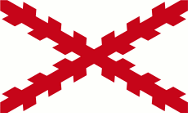
16th century,
The island belongs to the Spanish sphere of influence,
Source, by: Wikipedia (EN)



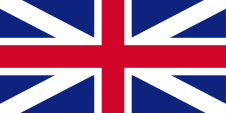
1761–1778,
Flag of United Kingdom,
ratio = 1:2,
Source by:
Die Welt der Flaggen






1778–1784,
Flag of France,
Source, by: Sodacan [CC BY-SA 3.0], via Wikimedia Commons




1784–1801,
Flag of United Kingdom,
ratio = 1:2,
Source by:
Die Welt der Flaggen





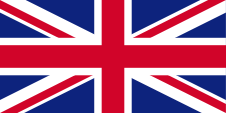
1801–1978,
Union Flag → quasi national flag,
Flag of United Kingdom,
ratio = 1:2,
Source, by: Wikipedia (EN)





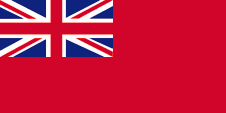
1864–1978,
Merchant flag,
ratio = 1:2,
Source, by: Flags of all Nations






1955–1965,
Flag of the government (state flag),
ratio = 1:2,
Source, by: Flags of the World



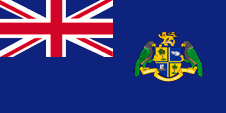
1965–1978,
Flag of the government (state flag),
ratio = 1:2,
Source, by: Flags of the World




1965–1978,
Flag of the Governor,
ratio = 1:2,
Source, by: Flags of the World



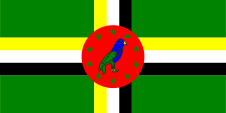
1978–1981,
National, merchant, state and war flag,
ratio = 1:2,
Source, by: Flags of the World



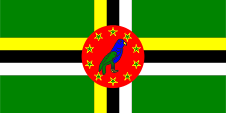
1981–1988,
National, merchant, state and war flag,
ratio = 1:2,
Source, by: Flags of the World



Leeward Islands (1871–1939):
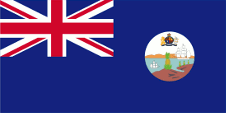
1871–1958,
Flag of the government (state flag),
ratio = 1:2,
Source, by: Flags of the World



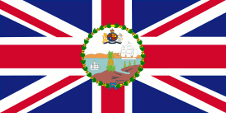
1874–1959,
Flag of the Governor,
ratio = 1:2,
Source, by: Wikipedia (EN)



Windward Islands (1940–1958):
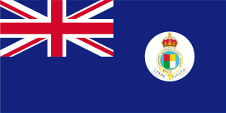
1903–1958, doubtful,
Flag of the government (state flag),
ratio = 1:2,
Source, by: Flags of the World



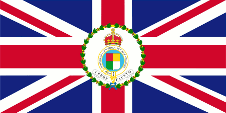
1885–1960,
Flag of the Governor-in-Chief,
ratio = 1:2,
Source, by: Flags of the World



Federation of the West Indies (1958–1962):
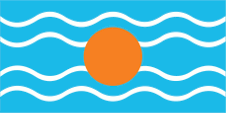
Flag of the Federation of the West Indies,
ratio = 1:2,
Source, by: Flags of the World



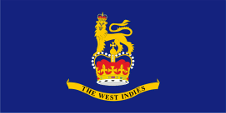
Flag of the Governor General,
ratio = 1:2,
Source, by:
Flags of the World




When Dominica became independent on 3rd of November in 1978, a green flag with a
tricoloured cross (yellow, white and black) was introduced, which had a red disc
with ten green stars and a parrot in the middle. The flag was designed by Alwin
Bully. A few changes were made in the years up to 1990: 1981; order of the
colours in the cross, the stars were given yellow borders, 1988; the parrot was
mirrored around a vertical axis and from then on sat on a small branch. The
colour green stands for the nature of the island, and the three-coloured cross
stands for Christianity and the Christian Trinity. Yellow symbolises the sun and
fertility, as well as the mulattoes. White symbolises water and purity, as well
as the white islanders. Black symbolises the earth and the islanders of African
descent. The red disc originally stood for the island's socialist development
programme. The ten stars in the disc represent the spiritual administrative
districts of the island. The parrot in the centre of the disc is a Sisserou
(Amazon Imperialis), the national symbol of Dominica. It was taken from the
national coat of arms. The colours of the flag are probably not defined by law.
They seem to have been defined in practice, following the colour specifications
of the British Admiralty, today interpreted as: Green = Pantone 349 C, Deep
yellow = Pantone 116 C, Red = Pantone 186 C.
Initially, the island was
disputed between France and England/United Kindom. In 1784, United Kindom was
able to secure possession of the island, so that from that year onwards the flag
of United Kindom flew unchallenged over the islands. From that point in time on,
individuals, citizens and also the authorities represented their status as
citizens or organs of the British nation, embodied in the United Kingdom,
through the use of the Union Jack, then called the "Union Flag". At sea, the
British merchant flag, the Red Ensign, was intended for British citizens from
1864. In a few cases, the citizens of a colony were authorised by the Admiralty
to use their own Red Ensign with the colony's badge at sea. The Union Jack in
the top corner of these flags signalled the connection to United Kingdom.
Originally Dominica belonged to the British colony of the Leeward Islands,
later to the British colony of the Windward Islands and then to the Federation
of the West Indies. The country became an dissociated own colony in 1962.
United Kingdom introduced a flag system in 1864 in which:
• war ships fly
the "White Ensign" (naval flag), a white flag often with an uninterrupted red
St. George's-Cross and with the Union Jack in the upper staff quadrant of the
flag,
• merchant ships fly a "Red Ensign" (also named "Civil Ensign" → civil
flag, the real merchant flag), a red flag with the Union Jack in the upper staff
quadrant of the flag, and
• governmental ships fly the "Blue Ensign" (flag
for the use by the gouvernment → the actual state flag), a blue flag with the
Union Jack in the upper staff quadrant of the flag.
From 1865, the ships
of the colonial governments were allowed to use a Blue Ensign with a badge at
the flying end. The respective governments were to provide appropriate badges.
Merchant ships and seafaring privateers from colonies were only allowed to use a
Red Ensign with a badge if the British Admiralty had issued a corresponding
licence for that colony.
Such a badge was often a regional landscape
depiction on a disc, often showed ships, historical events or could simply be a
kind of logo. Very often a badge also contained the name of the country or a
motto. However, some possessions had a coat of arms from the beginning or were
given their own coat of arms over the years and the badge was abolished. To
ensure a largely uniform appearance in the flying end of the flags, coats of
arms and other symbols were displayed on a white disc in the size of the former
badges.
However, there were also exceptions, as some colonies dispensed
with this white disc and placed their coat of arms or even just the shield –
sometimes enlarged – directly on the bunting. As early as the 1940s, the white
disc was removed and the coat of arms was applied directly or enlarged.
This conversion process took place gradually, nowhere simultaneously and
completely. In some British possessions flags with the white disc are still in
use today, in others no longer and in some areas both variants exist side by
side.
From 1871 to 1939, the territory was part of the British colony of
the Leeward Islands, a federal colony consisting of individual sub-areas,
sub-colonies or islands. These individual colonies had their own flags, also
called "Blue Ensigns" with their own badge, for use by the governments of these
colonies. The overarching political entity of the British Leeward Islands also
had its own Blue Ensign with its own Leeward Islands badge. This badge was
created in 1871 and showed a pineapple on a coastline with two ships. The
governor also used it on his flag. He was represented locally, in the associated
sub-territory, sub-colony or island, by an administrator. The federal colony
ceased to exist when it was incorporated into the Federation of the West Indies,
led by a Governor-General. Locally, in the associated sub-territory, sub-colony
or island, the highest representative of the Crown retained his rank. He
remained an administrator or even governor. The local flags (e.g. blue or red
ensigns, i.e. separate state or merchant flags) have been retained.
From
1940 to 1958, the territory was part of the British colony of the Windward
Islands, a federal colony consisting of individual sub-areas, sub-colonies or
islands. These individual colonies had their own flags, also called "Blue
Ensigns" with their own badge, for use by the governments of these colonies. The
overarching political entity of the British Windward Islands most likely did not
have an additional Blue Ensign of its own, but its own badge. This badge was
created in 1886 and showed an heraldic shield divided into four parts with the
colours red, yellow, green and white, surrounded by a white belt with the
inscription "Governor in Chief, Windward Islands", with the British crown above.
Below is a white banner with the motto of the islands: "i pede fausto" → "Walk
with a blessed foot". In 1903, the design of the crown was changed slightly (to
the Tudor crown). The Governor of Barbados was always also the Governor-in-Chief
of the colony of the British Windward Islands. The Governor-in-Chief used the
Windward Islands badge on his flag after all. He was represented locally by a
governor in the associated sub-territory, sub-colony or island. The federal
colony ceased to exist when it was incorporated into the Federation of the West
Indies, led by a Governor-General. Locally, in the associated sub-territory,
sub-colony or island, the highest representative of the Crown retained his rank.
He remained an administrator or governor. The local flags (e.g. blue or red
ensigns, i.e. separate state or merchant flags) have been retained.
Dominica received its own badge in 1955. It showed a coastal landscape with a
British merchant ship with reefed sails in the foreground and the silhouette of
a town on a mountain in the background.
Also in 1955, an own "Blue
Ensign" was introduced as the state flag at sea, a dark blue bunting with a flag
depiction – the British Union Jack – in the upper corner, which showed the badge
in the flying end of the flag. Dominica, with its own administration since 1962,
no longer displayed a badge on the flag from 1965, but the coat of arms awarded
in 1961.
From 1958 to 1962 the territory was also part of the British
colony "Federation of the West Indies". This political project was an attempt to
unify the administration and to create a state modelled on Canada, but also to
counteract the independence efforts of the associated islands and colonies.
However, jealousies arose between the large and small islands and even led to
open dispute. The flag of the "Federation of the West Indies" was a light blue
flag with four horizontal white wavy lines and a golden disc in the middle. It
symbolized the sun over the Caribbean Sea. There is some doubt about the color
of the blue; it is often assumed to be the usual British heraldry blue. However,
a contemporary description calls it an "imperial blue" which would be light blue
and many contemporary prints also show this light blue.
On 1st of March
in 1967, internal self-government was granted by United Kingdom and Dominica
became an autonomous state, associated with United Kingdom. On 3rd of November
in 1978 United Kingdom granted independence. In this context, the current flag
was introduced.
Source:
Die Welt der Flaggen,
Flaggen Wappen Hymnen,
Flaggen und Wappen der Welt


1871–1939,
Badge of the Leeward Islands
Source: Das Flaggenbuch
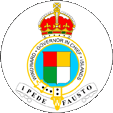
1939–1955,
Badge of the Windward Islands
Source: Das Flaggenbuch

1955–1965,
Shield of Dominica
Source: Flags of the World
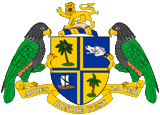
Coat of arms of Dominica,
Source:
Corel Draw 4

The today's coat of arms of Dominica shows two Sisserou Birds (Amazon Imperialis) as shield holders, und a quartered blazon. The single fields show regional motives: palm tree, frog, sailing boat and banana tree. Above the shield on a golden-blue torus a golden British lion. Below the shield a maxim-ribbon with the motto of the state in French: "Aprés Bondies c'est la Ter" → "Behind God comes the country".
Source:
Die Welt der Flaggen,
Flaggen Wappen Hymnen,
Flaggen und Wappen der Welt

Location:

Source: CIA World Factbook
Map of the country:

Source: CIA World Factbook

Area: 290 square miles
Inhabitants: 71.625 (2018), thereof 86% of African descent, 9% Mulattos, 3% Caribs, 1% Europeans
Religions: 80% Roman Catholic, 15% div. Protestant
Density of Population: 272 inh./sq.mi.
Capital: Roseau, 14.725 inh. (2011)
official Language: English
other Languages: Creole French (Patois)
Currency: 1 East Caribbean Dollar (EC$) = 100 Cents
Time Zone: GMT – 4 h
Source:
Wikipedia (D),
Wikipedia (EN)

5th to 4th millennium B.C. · first human settlement on the island
3rd of November in 1493 · discovered by Columbus
1627 · the Earl of Carlisle claimes the island for England, but there is no colonization
1635 · France lays claim to the island, but there is no colonization
31st of March in 1660 · Agreement between the Caribbean natives, the English and French that the island is left to the Caribs, but in the following years reach a number of French settlers the island
1686 · England and France confirm the status of the island as Carib Territory, but in the afteryears come again French settlers and missionaries on the island
1700 · the British attempt to establish a colony on the island
1748–1761 · the island is officially a neutral territory between United Kingdom and France
6th of June in 1761 · United Kingdom occupies the island
1778 · France occupies the island
1784 · Dominica becomes a British colony again
1833–1940 · Dominica is part of the British colony of the Leeward Islands
1865 · Dominica becomes a Crown Colony
1940–1960 · Dominica is part of the British colony of the Windward Islands
3rd of January in 1958 to 31st of May in 1962 · Dominica is part of the British colony of the "Federation of the West Indies"
1st of March in 1967 · Dominica becomes a with United Kingdom associated state (internal self-government)
3rd of November 1978 · United Kingdom grants independence
1981 · Attempted coup by the military, as a result of that, the military is abolished with exception of a small special unit, USA and Canada are responsible for national defense since 1996
Source: Wikipedia (D),
World Statesmen

Columbus discovered the island on a Sunday, the "Day of the Lord", in Latin: "Dies Domini". Hence the name of the island "Isla Dominga" was derived. Later, it was just Dominica.
Source: Handbuch der geographischen Namen


![]()





















































